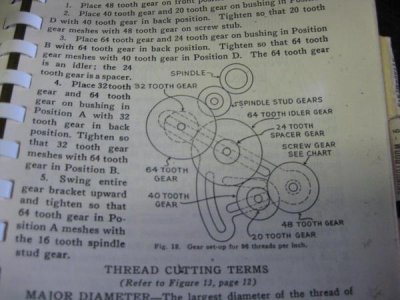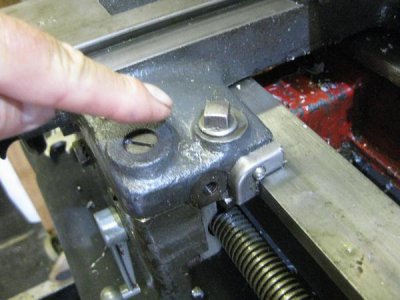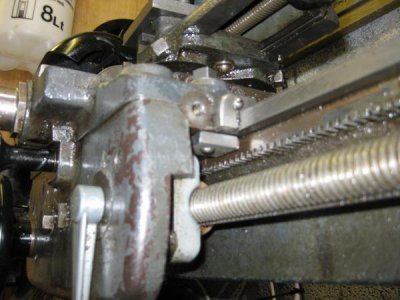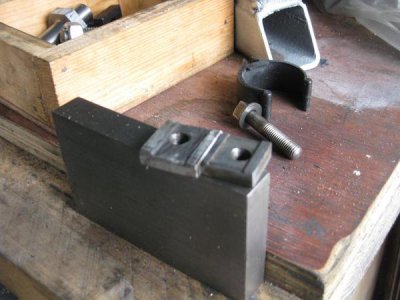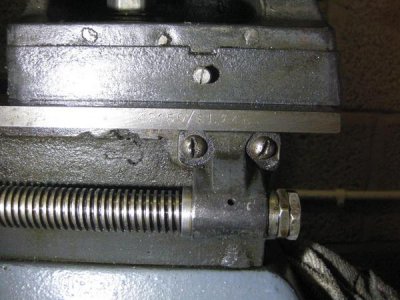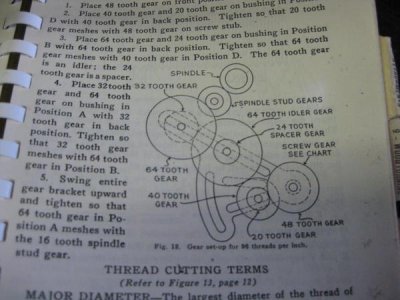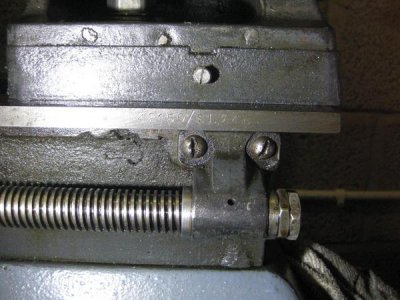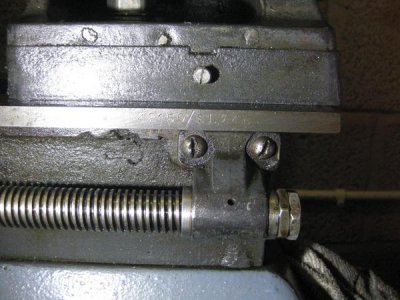As promised the pictures of the carriage lock Err Hum .

anic:. It looks like I've got to wait for photobucket to complete the upload before I can get the IMG codes for the post . I may be typing blind for a while as there are still another 67 piccies to move over to the bucket ( not all for this site fortunately ) .
This first picture is me pointing to the carriage lock , you screw it C/W to pull the plate up to the carriage edge and also up against the underside of the bed way . The bearing surfaces that cause the lock are worn after only 72 or so years of use .
The thread indicator has ben removed as it is nigh on useless .. cutting another 16 tooth gear manually on the lathe is going to be one of the next exercises after I finish the current four lathe jobs I have in hand . Luckily I have 36 tooth and a 64 tooth screw cutting gears so accurately indexing the root of the tooth will not be a problem (hopefully ) .
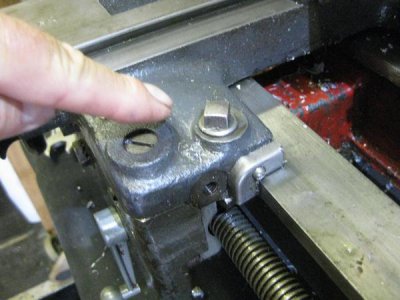
This picture shows the underside view as best as I could
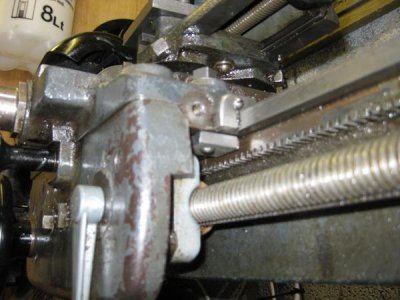
Here is a quick fix made locking plate that I have made ( Note the Rough Engineering Made Easy finish by an Ex REME guy ) and the original better finished one on the right , notice that mine is quite a bit bigger than the original one.

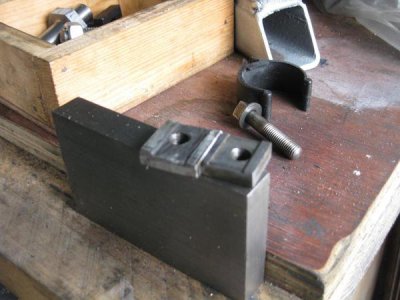
The screw thread hole was put to one side like the original ... though I've since found that there is no real need to do this .
When I make the MK 2 version it will be more centrally placed as well as my making the plate even bigger by about a 1/10 of an inch in length and 1/16 in width . I can't make it any thicker for the 6 mm plate is about as thick as it can go before it fouls on the cast metal of the carriage that houses the half nut followers
Now a quick peep at some data marks & an info plate
The brass end plate is the one that shows the original General Electric Company motor, made in England to the electrical regulations of 1924

This is the bed stamping on the front face of the RH end of the bed showing the serial number .
Does this first set " 42150 " tie in with the Atlas or Craftsman lathes ?
Does SL 346 part of the serial number indicate that it is Sphere Lathe number 346 ?
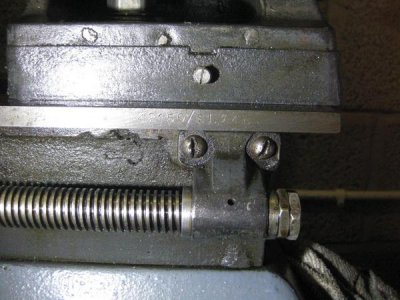
The headstock foot of the lathe carries the cast in impression for Sphere . Judging by the colour of the paint someone has re painted the feet & lower front of the bed as the back f the lathe is a typical very old dark grey that was so typical of British Military engineering machinery of the period .

I decided to get adventurous & build this gear train of 96 tpi for I want to set up so I can auto cut about 18 feet of aluminium, bar nice and gently as I got fed up turning the fed screw and having to reposition & lock the carriage every two inches of travel .
the only problem is that I have to make the bearing and mounting bolt for one of the sets of gears as there are only two that came with the lathe and this train needs three. I've made part of it today ( the mounting sleeve/ top hat , but will sleep on how to solve the mounting bolt exercise using materials I have to hand .
